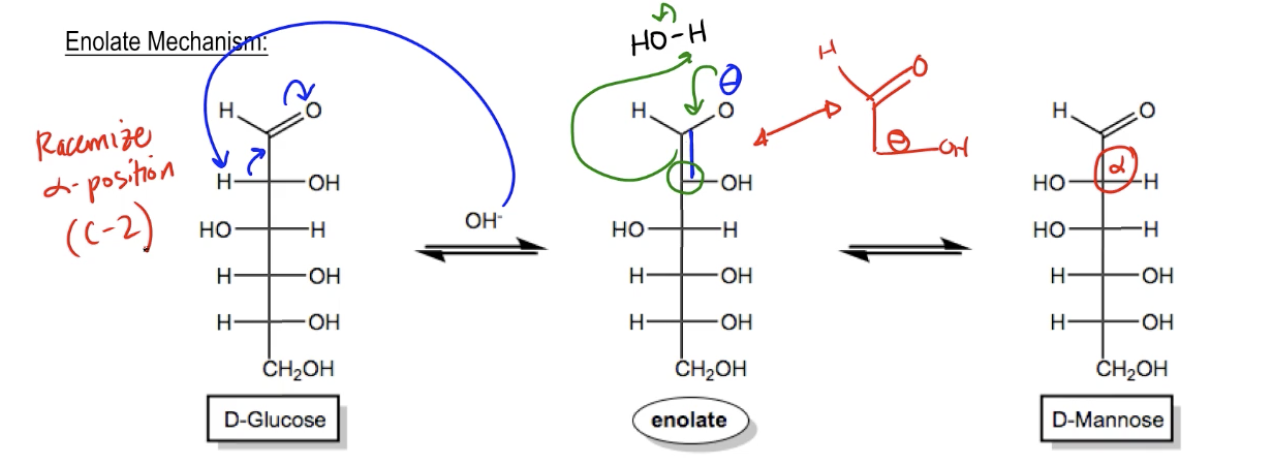In basic conditions, monosaccharides can undergo complex reactions, including epimerization, which involves the alteration of a single chiral center. An epimer is defined as a type of stereoisomer where only one chiral center differs between two sugars. Specifically, when the chiral center at carbon 2 (C2) is altered, this process is referred to as epimerization, while changes at carbon 1 (C1) lead to anomers, a phenomenon known as mutarotation.
For example, beta-D-glucopyranose can epimerize to D-mannopyranose through the modification of the hydroxyl group at C2, which can switch from a downward to an upward orientation. This reaction can occur via different mechanisms, including the enolate mechanism and the enediol mechanism. Both mechanisms contribute to the formation of a mixture of isomers, resulting in a complex equilibrium of different anomers and epimers.
During this process, the equilibrium between the anomers of glucose and mannose creates a diverse array of products, complicating the reaction landscape. The presence of base catalyzes these transformations, leading to a mixture of isomers that can be difficult to control. Understanding these mechanisms is crucial for grasping the behavior of monosaccharides in basic conditions.






